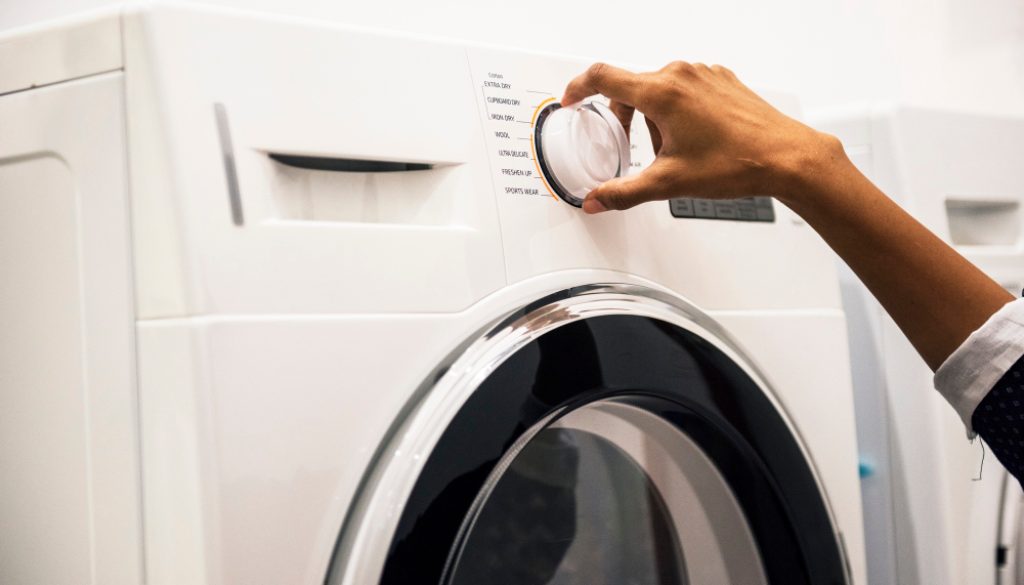How to move a washing machine safely: a practical step-by-step guide
Moving a washing machine is no easy task. It is one of the most heavier and more delicate The product contains water, internal drums and suspension systems that can be easily damaged if not handled with care.
Whether you are going to move to If you are moving to another city or simply want to change your room, following a series of steps will help you to protect your washing machine and your home during the transfer.
At Gil Stauffer, with more than a century of experience in removals and transportation of delicate goods, we explain how to do it correctly.
🧠 Why a washing machine requires special care
Unlike other household appliances, a washing machine is not just a metal box with wires and tubes.
Inside there are dampers, counterweights and precision electronic parts. The drum is suspended to absorb vibrations during spinning, and if the machine moves without stabilising it, it may sway and damage internal components.
In addition, washing machines retain waste water even after the last wash. If not emptied correctly, this water can leak out and cause problems during transport.

🧰 Before moving day: preparation and tools
Before moving the washing machine, prepare the space and gather what you need:
-
A trolley or wheeled platform (dolly or small pallet).
-
Straps or tapes to hold the machine.
-
Protective blankets or stretch film to avoid scratches.
-
Wrenches or tools to disconnect the pipes.
-
Rags or buckets to collect any water that may leak out.
🔌 Step 1 - Disconnect safely
-
Unplug the washing machine from the socket.
-
Closes the hot and cold water stopcocks.
-
Unscrew the rear hoses carefully.
-
Have a bucket or towel ready: some residual water may run out.
💧 Step 2 - Drain remaining water
Pulls out the drain pipe and pour the remaining water into a bucket.
In many models there is a small door at the bottom front where the filter is located: open it and let it empty completely.
Leaving water in can cause leaks or bad smells.
🔩 Step 3 - Secure the drum
When the washing machine is delivered new, it usually includes some transport screws (locking bolts) which immobilise the drum.
Before moving it, reinsert them.
If you no longer have them, you can contact the manufacturer or fill the inside with a firm blanket or foam to limit drum movement.
👉 This step is essential to avoid internal damage.
🧽 Step 4 - Clean and dry the machine
Wipe the inside with a soft cloth and leave the door open for a few hours for ventilation.
This prevents the appearance of mould and odours during transport or storage.
🚪 Step 5 - Prepare the access and the route
It measures the doors, corridors and stairs where you are going to run the washing machine.
This way you will avoid bumps and jams on moving day.
Lay blankets or cardboard on the ground to protect parquet or tiles.
🏋️ Step 6 - Move the washing machine correctly
-
Tilt the washing machine slightly backwards and slide the trolley base underneath.
-
Hold it with straps so that it does not move.
-
Move it to always in an upright position.
-
Avoid dragging it directly on the floor, as this may scratch the surface or damage the legs.
🚚 Step 7 - Loading into vehicle and transportation
Maintain the washing machine always in an upright position during transport.
Place it next to a wall of the truck or van, and fasten it with straps.
Never place heavy objects on top of it or knock it over.
🔄 Step 8 - Wait before reuse
When you arrive at your new home:
-
Remove the transport screws.
-
Reconnect the pipes and the plug.
-
Wait for at least 30 minutes before use, to allow the internal fluids to stabilise.
⚠️ Common mistakes to avoid
❌ Do not replace the transport screws.
❌ Forgetting to empty the water and filter.
❌ Lay her down in a horizontal position.
❌ Use adhesive tape on the front panel.
❌ Switch on immediately after transfer.
❌ Attempt to move it alone or without suitable equipment.
💡 A few extra minutes of preparation can save you a costly breakdown.
👷♂️ Advantages of having professionals
Companies specialising in removals - such as Gil Stauffer- have at their disposal tools and experience to handle heavy appliances in complete safety.
Our teams can disconnecting, packing, transporting and reinstalling your washing machine without risk of damage or injury.
In addition, if you need to temporarily store your electrical appliances, we offer furniture storage services with environmental monitoring and control.




